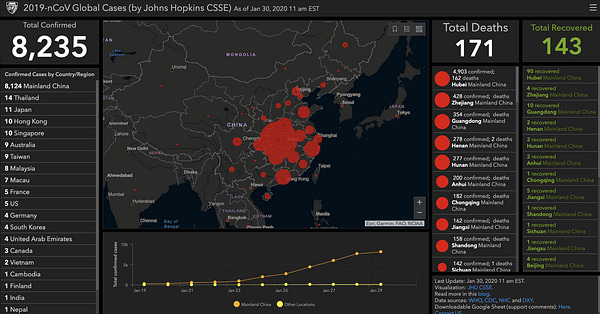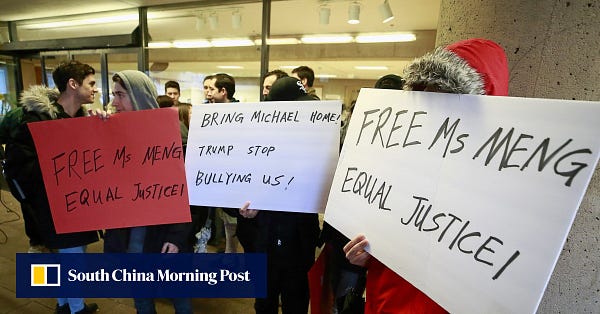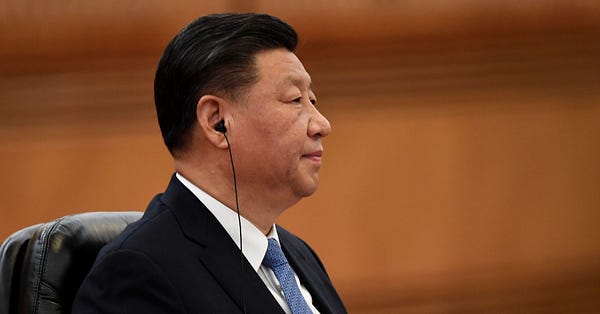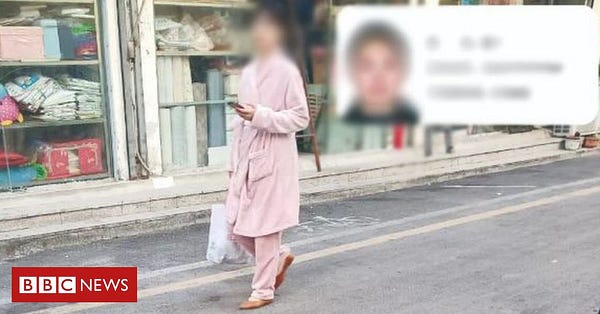The China Letter: January 29, 2020
WHO is on the coronavirus


Two months after the outbreak was first identified, and a month after it was first reported from Wuhan, the World Health Organization has put the coronavirus on its global map. It’s made China a topic in more ways than ever in the social media age:

The U.S. travel warning arrived as the death toll from the virus reached 213, mostly in central Hubei province, while the number affected by it approached 10,000.
The strange signs of Huawei


The extradition hearing for Huawei’s chief executive officer Meng Wanzhou lasted four days in Vancouver, during which her lawyers argued that U.S. sanctions upon Iran don’t apply in Canada. But a surreal twist was provided by a pseudo-protest featuring young women paid $150 to hold up signs, if just to appear on a news report by CCTV:


China and the U.S.: it’s academic


Charles Lieber is accused of hiding his involvement in China’s Thousand Talents Plan, with which he was allegedly being paid $50,000 a month by the Wuhan University of Technology in China and living expenses up to $158,000, plus more than $1.5 million to establish a research lab. Two other Chinese nationals were also charged in Boston.


Meanwhile, the tweets that landed 20-year-old Luo Daiqing in prison in a Wuhan prison were images of the antagonistic character from the cartoon Biker Mice on Mars.
Teenage kicks in Hong Kong


This feature from Reuters puts a human face on two teenagers who connected while wearing gas masks while fighting for democracy in Hong Kong. The region is now confronting the coronavirus, but protesters are still active on the streets.
Let’s talk about TikTok
Human Rights Watch tested whether the new social media sensation would tolerate clips of Tank Man, from the 1989 Tiananmen Square crackdown in Beijing—and the content was restricted from view. Now that its TikTok became the world’s fourth most downloaded app, parent company ByteDance is increasingly asked questions:


TikTok, along with the Chinese-owned Grindr and FaceApp—the former is a gay hookup service, the latter was a fleetingly popular way of aging your face—have become the stuff of concern for U.S. intelligence, but wider regulatory measures await.
Belt and Road and Canada
The authors of One Road, Many Dreams, co-authored by Daniel Drache and A.T. Kingsmith of York University, look at the Canadian angle on these economics:


It will take more than another decade to definitively evaluate China’s successes or failures with the attention that it deserves. In the meantime, Canada, like every country, needs a strategic response to China’s global infrastructural initiative. As yet, it doesn’t have a well-thought-out answer. The newly formed Canada-China parliamentary committee should make the BRI a foreign-policy priority and propose a set of recommendations to the Trudeau government from an international development perspective. China’s infrastructural-driven diplomacy is too important to underestimate as it gathers momentum for the decade ahead.







